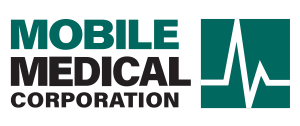According to OSHA, workplace fatalities, injuries, and illnesses cost the United States billions of dollars every year. Employers pay out more than $1 billion dollars per week for direct workers' compensation costs for disabling, nonfatal workplace injuries.
Figures like these help to explain why an effective medical surveillance program is vital for you and your company. The components of a medical surveillance program come together to ensure that workers remain safe and healthy.
The standards that govern medical surveillance processes are set by OSHA. These standards and the practice of medical surveillance benefit employers in several ways, making a happier, healthier, more productive workplace.
Understanding what medical surveillance is, how it can positively impact your workplace, and ways third parties like Mobile Medical can help implement these programs into the workplace can help you take steps forward to create an ideal work environment.
What is Medical Surveillance?
Medical surveillance is the ongoing systematic gathering, analysis, and distribution of data on the health of workers and their exposure or potential exposure to hazards in the workplace.
It is an assessment process that seeks to identify the underlying causes of hazards and other workplace problems. It also involves the use of a targeted approach to eliminate the dangers and their causes.
The primary aim of medical surveillance is to protect employee health and safety. It does this by ensuring employers are adhering to the standards set out by OSHA.
OSHA provides resources to support medical surveillance in the workplace. These include information about specific hazards and surveillance guidelines. It also provides resources for the assessment of employees exposed to occupational hazards.
What is a Medical Surveillance Program?
A medical surveillance program includes methods for collecting, tracking, and analyzing employee health and safety data. These include a series of initial medical examinations and tests, as well as periodic follow-ups and data collection for historic records – all of which are required by OSHA.
The components of a medical surveillance program include:
- Identifying workers for whom surveillance is needed.
- Identifying potential hazards and assessing the risk of exposure.
- Selecting appropriate tests and examinations.
- Conducting initial tests and examinations along with medical and occupational histories.
- Conducting the required periodic tests and examinations.
- Using initial results to guide more frequent and detailed examinations.
- Carrying out post-incident surveillance.
- Performing ongoing analyses of examination results and the data gathered.
- Training workers to recognize symptoms of exposure to specific hazards.
- Providing a written report on the medical findings of the program.
- Suggesting actions employers should take to identify potential health and safety risks and hazards.
The Difference Between Medical Screening and Medical Surveillance
The terms medical screening and medical surveillance are often used interchangeably. It is important to note, however, that there is a significant difference between them.
Medical surveillance is the complete approach taken to detect, assess, and mitigate or eliminate workplace hazards and their causes.
Medical screening, such as the onsite screening services provided by Mobile Medical, is one of the components of a medical surveillance program. Medical screening is proactive care for employees and is carried out while employees still appear healthy (are asymptomatic). This is usually before they would ordinarily seek treatment for a work-related hazard.
Accessing OSHA-Compliant Medical Screenings and Medical Surveillance Programs
Medical practitioners, such as family physicians, and certified medical labs can provide the services that are required by OSHA as part of a medical surveillance program.
In one scenario, employers can send employees to approved medical practitioners and medical labs to conduct their tests, examinations, and screenings. The results would then be made available to the employers.
This would require employers to actively monitor that the correct tests and screening are done for individual employees. They would also have the task of collating the information as well as implementing all of the components necessary for an effective medical surveillance program. Along with this, continuous assessment, feedback, and re-evaluation of the program would also have to be carried out.
A more efficient approach is for the employer to select a single provider to be onsite. The provider can take charge of the required screenings and all other components of their medical surveillance program.
Benefits of Onsite Medical Surveillance Programs
Onsite medical surveillance programs, and their onsite screening services, provide a convenient and streamlined approach to medical surveillance. With onsite medical surveillance programs, you get:
- Continual monitoring of employee health and of hazard exposure and risks.
- Ease of scheduling tests, examinations, screenings, and follow-ups for employees.
- Employee compliance with workplace standards set out by OSHA.
- Greater employee participation in the required screening and other components of the program.
- Easy access to the results and records of employees.
Also beneficial are:
- The reduction in time lost (and associated costs) if employees were to take time off to get offsite tests, examinations, and screenings done.
- The reduction in overtime needed to make up for that lost time.
You are also more assured of :
- A reduction in the risk of violations and in actual violations of OSHA standards and regulations.
- A workforce that is compliant with OSHA standards and regulations and thus is healthier and safer.
- Improved attractiveness to top-quality employees and to potential business partners.
Why Choose a Third-Party Administrator for Your Medical Surveillance Program
The answer to this question often comes down to cost but it is also a matter of efficiency. Simply put, it is more cost-effective for most companies to use a third-party administrator. The costs associated with having an in-house team can prove to be prohibitive for all but large corporations.
You benefit from the years of experience a third-party administrator like Mobile Medical has from working with different scenarios, companies, and industries. The right third-party administrator will have gained a wealth of knowledge and perfected its processes over time. And, that is something your company can take advantage of.
Mobile Medical Expertly Handles the Components of a Medical Surveillance Program
Mobile Medical Corporation can take complete charge of your medical surveillance program. We are well versed in OSHA standards and regulations. We have streamlined data management and recordkeeping procedures. We also have convenient centralized billing and invoicing.
Get in touch with Mobile Medical today. We provide you with a dedicated program coordinator. You also get access to a nationwide network of occupational medical clinics. Plus, by choosing to work with Mobile Medical, you get round-the-clock access to our SkillCheck software. It provides worker credential information, along with results from drug testing and the other components of a medical surveillance program.



